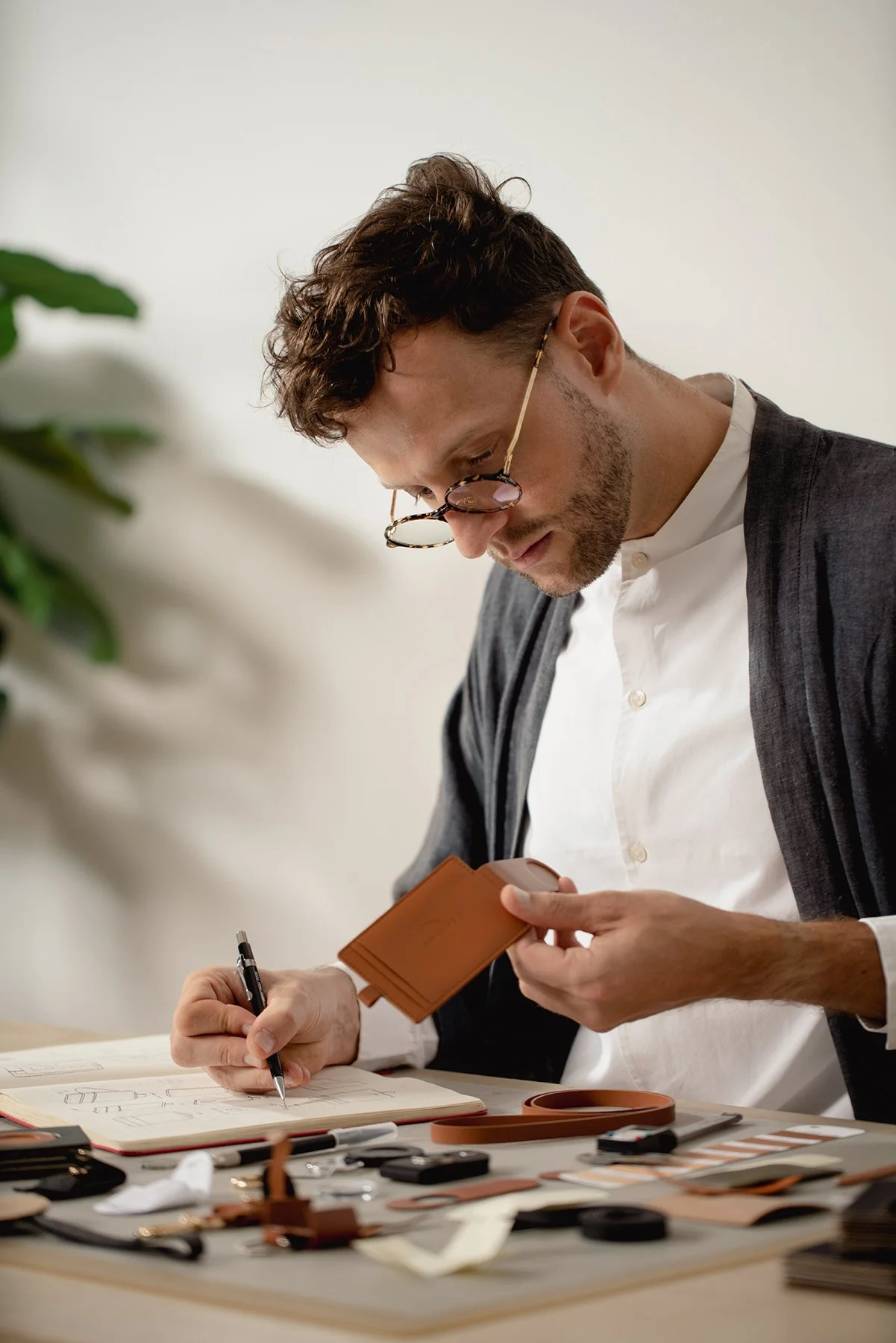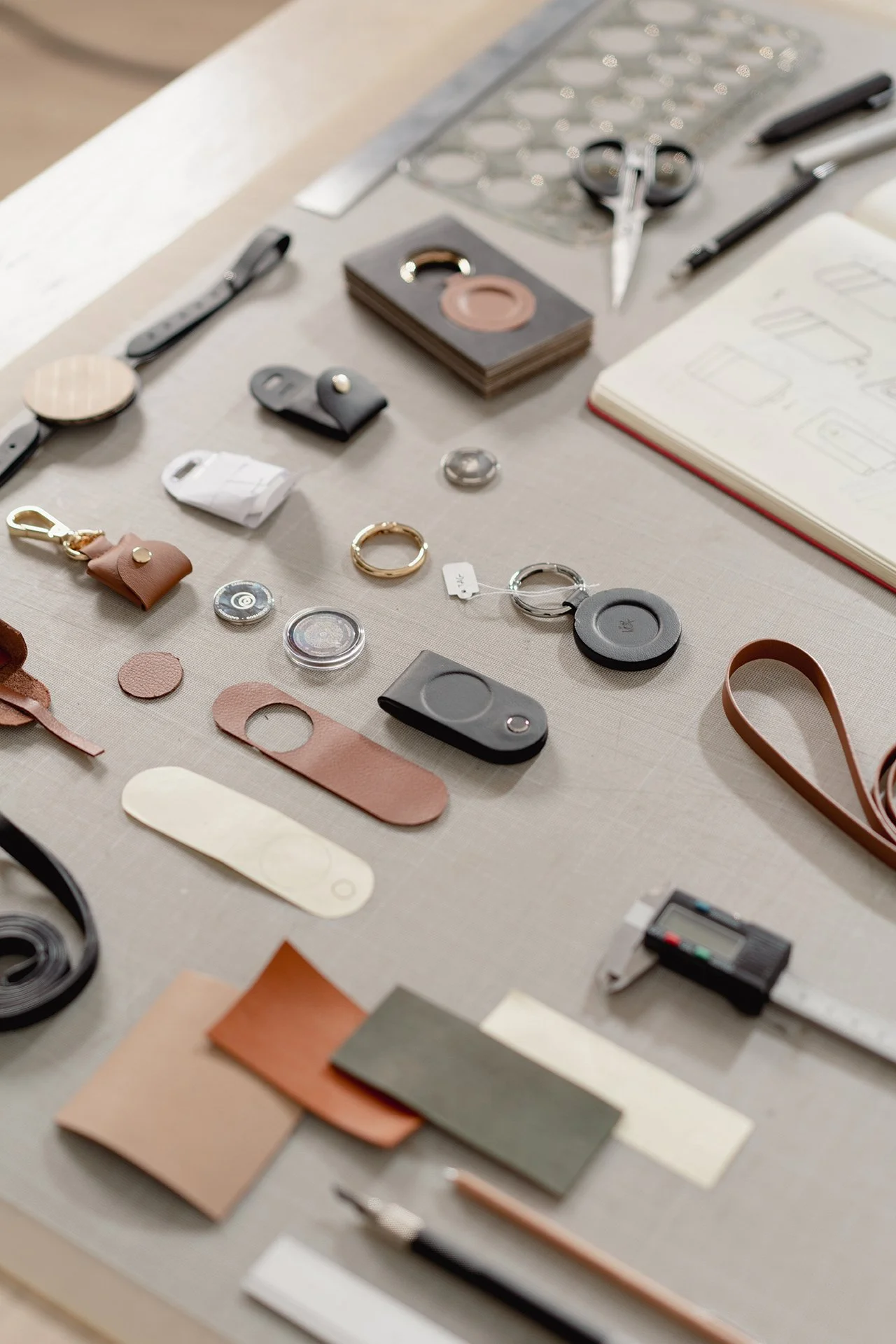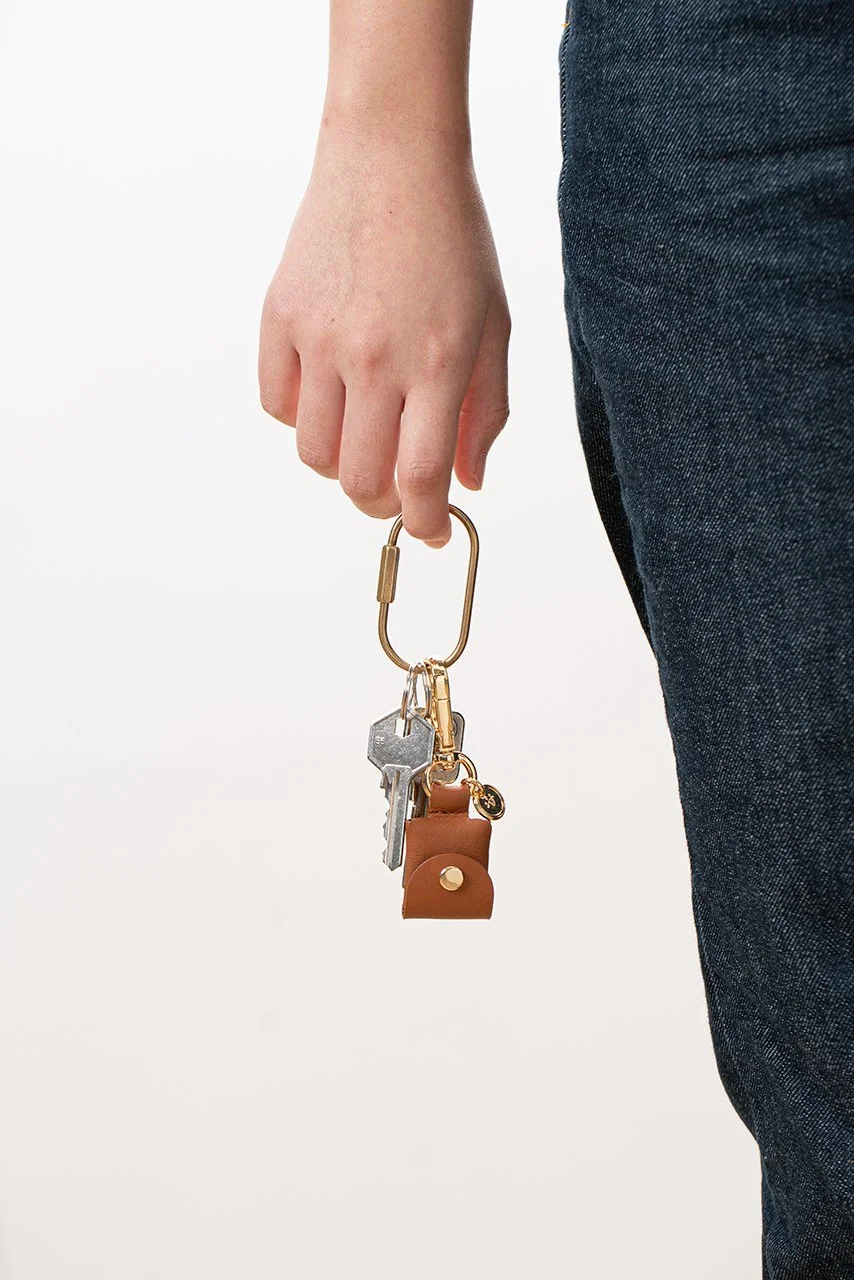Meet The Caddyboo Orchestrator, Designer & Visionary: François Hurtaud
Illustration: Nikolai Jónasson2023 is already shaping up to be a big year here at Caddyboo HQ; we’ve got plenty of new product launches to help you load up your game for the better, more collaborations with charities and charity events, and some exciting relationships in the works that we can’t wait to share with you.
For us, Caddyboo always goes back to our sustainability goals and values. We are a team of passionate eco-warriors whose passion for keeping things sustainable runs through everything we do - from product ideas to the design, the build and even shipping.
Coming This Month
February is due to be a big month for highly anticipated product releases and today’s blog post is dedicated to showing you a slice of that process. See the inspirations for certain products, the steps taken to ensure they are of the highest quality, and the way in which it is all made behind the scenes.
To help us lift the veil on what happens when you make your order, we are interviewing our in-house designer, Head of Industrial Design, inventor, designer, François Hurtaud.
A Catch Up With François
François Hurtaud is the person behind many of the product drawings and final designs. He brings ideas to life when they start as fledgling light bulb moments and is there for every step. He’s the king of quality control and his attention to detail means that every Caddyboo product you buy is the best quality possible.
Where do your inspirations come from?
Inspiration is everywhere around us, we are influenced by the culture, the country, and the city we live in. In Hong Kong, where I am based, space is a commodity. Every square meter has been optimized, and this constraint of special scarcity forces the population to come up with unique and creative hacks. I like to keep a diary of some of those thoughtful solutions. They are raw solutions to problems encountered by individuals with specific needs. In that regard, we’re all designers. This human thirst for problem-solving is inspiring.
The realm of Nature is a beautiful open book on functionality. Nature is lazy. Nature has been fine-tuning for over 3.7 billion years to optimize its reproduction using the least energy possible. A leaf has the form it has because it belongs to a certain tree and fulfills a certain function; its structure is determined by the veins which carry the cap. If we saw a fig leaf on a weeping willow we would have the feeling that all was not well. A leaf is beautiful not because it is stylish but because it is natural, created in its exact form by its exact function. It has coherence. As a designer, we can find inspiration in that formal coherence.
An industrial designer is concerned with economic and technological constraints. New materials and new manufacturing processes open up room for creative solutions. 3D printing for instance has never been more affordable. The technology once used for prototyping purposes only has become accessible for many, not only one can produce in the comfort of their home but it raises the question of the dematerialisation of manufacturing where no logistics are needed and where import taxes are a thing of the past. Combine this new approach of manufacturing with upcycled mono-material and we enter into an inspiring future.
In your opinion, what is the most important aspect of design?
If we’re talking about design as products we, humans, use and interact with, I would place the psychological aspect of design at the forefront. To design with the user at its core. Despite of trends or stylistic fashion, despite our ever-so-fast technological innovations, one thing that does not evolve rapidly and has remained more or less the same for the past 200,000 years is our psyche. The principle of psychology will remain the same as long as the human species does not evolve. So this translates into principles of design that, based on psychology, emotions, cognitions, actions, and interaction with the world will remain unchanged.
It is relatively easy to create a design that works smoothly and harmoniously as long as things go right, but it requires a good understanding of psychology and technology, as well as good communication, especially between devices and humans to avoid mishaps because problems arise whenever there is a misunderstanding. The key to good and human-centered design lies in understanding people and their needs. This aspect of the design is crucial.
What inspired you to create a golf-sustainable luxury leather line? What measures do you take to ensure all Caddyboo products are sustainable?
For Caddyboo’s line, we started by looking for the right partner to accompany and understand our values. We worked closely with a Swiss partner, crafting leather in the most authentic tradition since 1946. Leather is a wonderful organic material. Calf leather is possibly solely a reclaimed material. Indeed hides are collected after the animal’s death. It is one of the oldest materials used by humans, one that has been cherished and crafted with respect.
A product made of leather is built to last. With proper care, a leather item can last a lifetime, it will not break down over time. In fact, it will only get better with age. The more you use and care for your leather products, the more beautiful they will become.
Leather is also luxurious. It has a unique look and feels that cannot be replicated by any other material. When one purchases a leather product, one is investing in something that is both durable and timeless.
How would you describe your design & creative process?
As industrial designers, our job is to think and develop meaningful, while appealing, objects that can be produced in mass production. We are planners above all because, without a strong process, an idea rarely metamorphoses itself into a packaged product in retail shops. We approach human needs according to a precise method.
We usually start with some research related to the object, who is the target, what are the pain points, when and where is it used, what has been done before, what the competition looks like, do we have feedback from existing users. From there we can rephrase our initial brief to a problematic one. What if we approach the problem this or that way? There are no right answers, though we can articulate a couple of creative directions at that point.
A creative direction is an understanding, an agreement, or a consensus on specific problems to tackle and solutions to form. At that stage, we can start drawing candidly, we call this phase conceptualisation. Elements fall in place, the form finds its consistency with its usage, and materials are chosen to fit the construction.
After review of different concepts, we assess and decide with the stakeholders on developing the appropriate solution. During the development, we solicit relevant suppliers in accordance with the specifications of the desired object. The internal components dictate the form of the product. Prototyping is key to quickly getting a hand on functionality and feasibility. We use the most appropriate material of the correct thickness, try to reduce the working hour on the assembly line to a minimum, combine a number of functions in one element, make the fixture simple, use as few different materials as possible, and focus on detail and finishing.
After several rounds of prototyping, we then fine-tune the design for manufacturing, test, certify, control the quality, package, ship, and deliver the goods.
What is the biggest motivation in your work?
What drives me to do what I do is to ultimately see people using and enjoying the objects we create. It is satisfying and humbling to improve one’s living conditions.
Which product are you most excited to release this year and why?
This year, we’re excited to launch an extensive brand new collection of Caddyboo accessories, ranging from key charms to bottle holders. I have a thing for Bag Charm Mini, which uses an emergency $1 stash.
